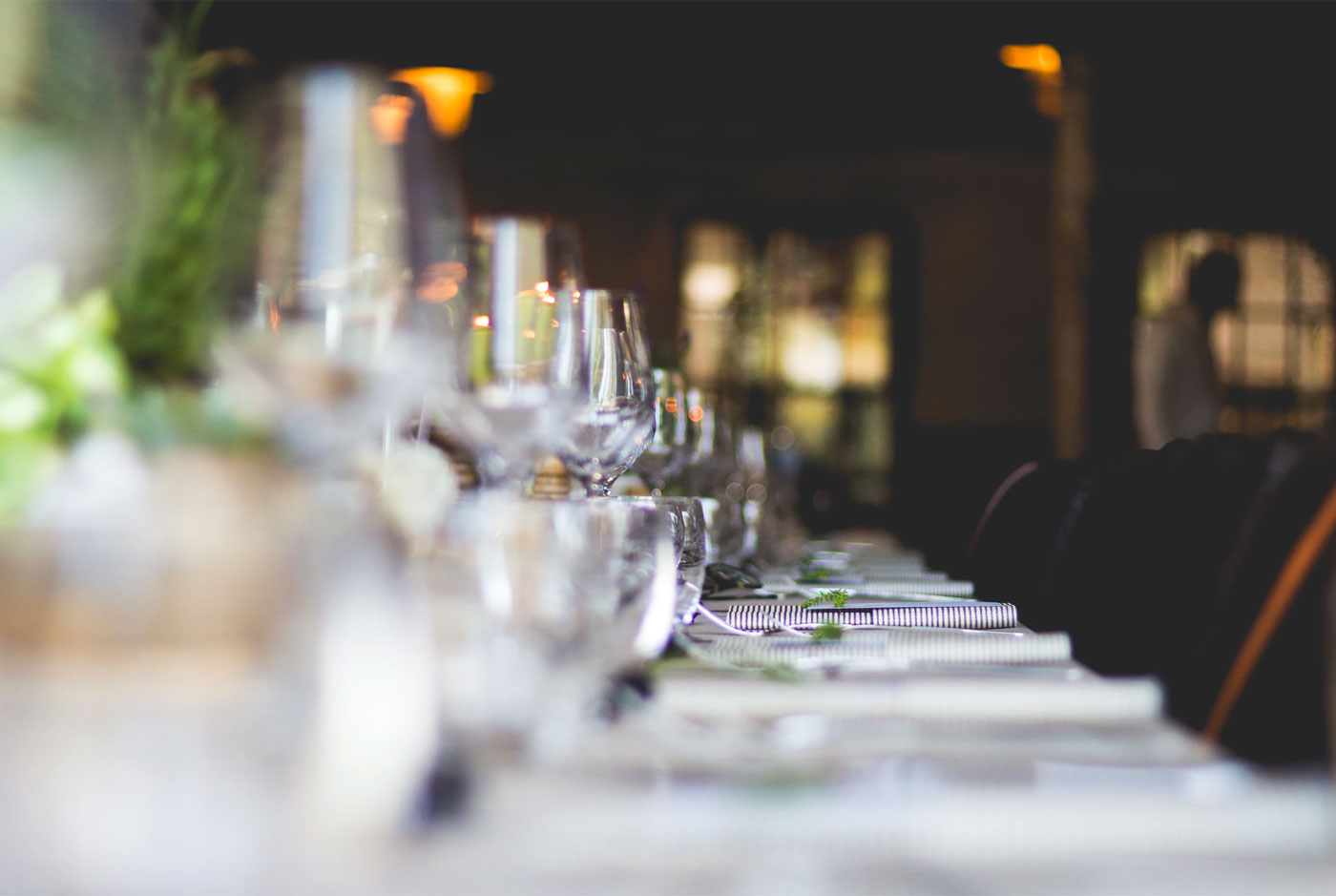Wedding is a universal event and celebrated in most parts of the world, if not all. And not only is it interesting to study our own culture and traditions when it comes to wedding, but it’s also fascinating to know others’ as well. Wearing 3 bridal gowns, breaking of glass, a week-long of wedding celebration–we’ve covered a few wedding traditions from other countries that differ from the most common wedding traditions we know and adapt today.
Love in Other Words in Other Places
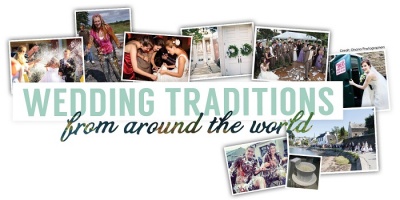
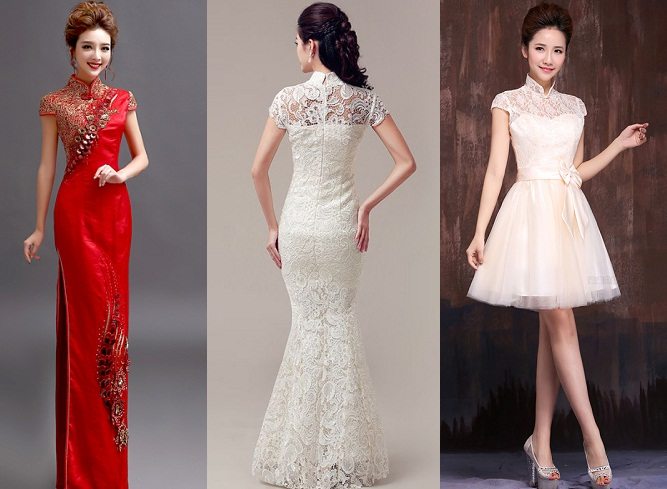
CHINA: Three wedding dresses
Yes, you read that right, ladies. The bride changes into three wedding dresses. The first dress would be the qipao, a red embroided and slim-fitting traditional dress. The second one is a white ball gown–similar to the bridal gown in Western traditions; and finally, a gown or a cocktail dress with the bride’s choice of color.
A lion dance is also performed at the wedding to scare away evil spirits and to ensure good fortune for the Chinese couple.
.

INDIA: Henna tattoos
Mehndi is a ceremonial art form that takes place usually in weddings and sometimes in other different events in India. Mehndi or henna is a paste that is applied usually on the palms and feet of the bride. Although this tradition is usually for women, sometimes grooms are applied with mehndi too. Besides from the beliefs usually associated with applying the mehndi—since the mehndi is a powerful medicinal herb—its actual significance is to protect the couple and keep them healthy.
Because of the many rituals and ceremonies that surround Hindu weddings, the celebration usually lasts for a couple of days.
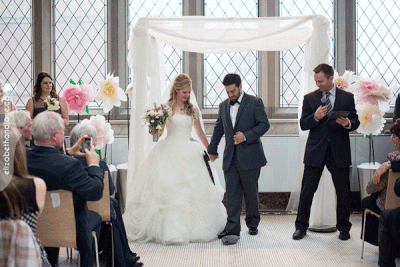
JEWISH: Mazel Tov!
After the Jewish couple drinks wine from the glass, the glass is placed on the floor and is crushed by the groom with his right foot and the guests will shout, “Mazel Tov!” (Congratulations!) which concludes the ceremony. Although there are other meanings behind this tradition, one is a reminder that despite the joy, the Jews still mourn for the destruction of the Temple in Jerusalem.
Another interesting detail is that an invitation to a Jewish wedding is usually two-sided—with one side written in Hebrew and the other in English.
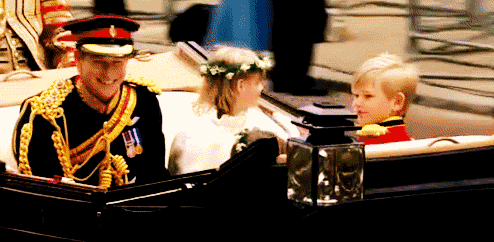
ENGLAND: Young bridesmaids
Having young bridesmaids in royal weddings has been a tradition that has stood for years. In 1981, Diana, Princess of Wales, had five bridesmaids with a five-year old girl being the youngest. The oldest was 17. In 2011, Catherine, Duchess of Cambridge, had her husband’s goddaughter and Camilla Parker Bowle’s granddaughter as bridesmaid. Both were three years old then.
Another wedding tradition in England is being the bridesmaids having the same dresses—a tradition that dates back to the country’s roots as far as the province of the Roman Empire. Wearing the same dresses would confuse robbers and highwaymen who wish to abduct the bride on the way to her wedding. Today, the tradition continues so as to confuse anyone who might have ill wishes for the wedding.
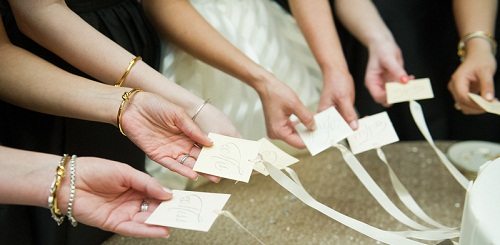
PERU: Cake pull
Another interesting take on wedding is the alternate version of “throwing the bouquet”. In Peru and in other countries in the South, they call this one “cake pull”–participated by the single female friends of the bride. Charms are tied to a ribbon and tucked in the frosting or in-between the layers of the wedding cake. The friends of the bride will gather around the wedding and pull a ribbon. Each charm represents a meaning: an Eiffel tower for a life full of travel, a star for wishes about to come true, an anchor for adventure, a four-leaf clover for good luck, and so on. The one who pulls the ribbon with ring charm tied on it is the next one in line for marriage.

ZULU: Wedding dance competition
The Zulu are a Bantu ethnic group and the largest one in Southern Africa. One of the highlights of the wedding ceremony of the Zulu people is the dance competition wherein a ritual antagonism between the family of the bride and the family of the groom is displayed. This is because of the fact that for a Zulu bride, marriage means disconnecting from her family’s ancestral line of birth and joining her husband’s ancestral lineage.
When it comes to the attire of the Zulu bride, it is unlike the common white wedding dress. She is decorated with red and white ocher designs on her legs and arms. Tied to her ankles are bag of pebbles for rhythmic effect during dancing. She wears a veil made of beads and twisted fig leaves; oxtail fringes are tied to her elbows and knees and a goat’s hair fringe is worn around her neck. She also carries a miniature knife called assagai pointing up to symbolize her virginity. After the wedding, the knife will be pointed down.

JAPAN: Sake drinking
Unlike in the Western culture where the exchanging of rings is the gesture that seals the marriage, in Japan, this gesture is done by drinking of sake. This Japanese ritual is called san-san-kudo; the three by three exchange is rich with meaning. It is performed by the bride and groom and both sets of parents; each person takes 3 sips of sake from each of 3 cups. The first 3 represent three couples, the bride and groom, and their parents. The second 3 represent three human flaws: hatred, passion, and ignorance. “Ku”, or 9 is a lucky number in Japanese culture. And “do” means deliverance from the three flaws. This ritual dates back to a time when sharing sake created a formal bond as strongly as a handshake did in Victorian times.

It’s deeply fascinating how diverse the world is and how rich the cultures that we have. But no matter where we are, no matter what culture we’re in, no matter which traditions we follow, and no matter what we speak, we still speak the same language of love.
If you’re looking for the right caterer for your event, taste and see if we are the one for you! Attend our FREE Grand Food Tasting and experience our service with a sample setup. To request a package, you may refer to the ‘request for a catering package’ balloon on the right bottom corner of this page or contact us directly at (02) 925-0107 or (02) 925-0103. Together, let’s make your dream event possible!
Image credits: GIPHY, Etsy, LuisGonzales
Sources: 10 Wedding Traditions from Around The World, 15 Unique Wedding Customs From Around The World, Cultural Wedding Traditions and Customs
